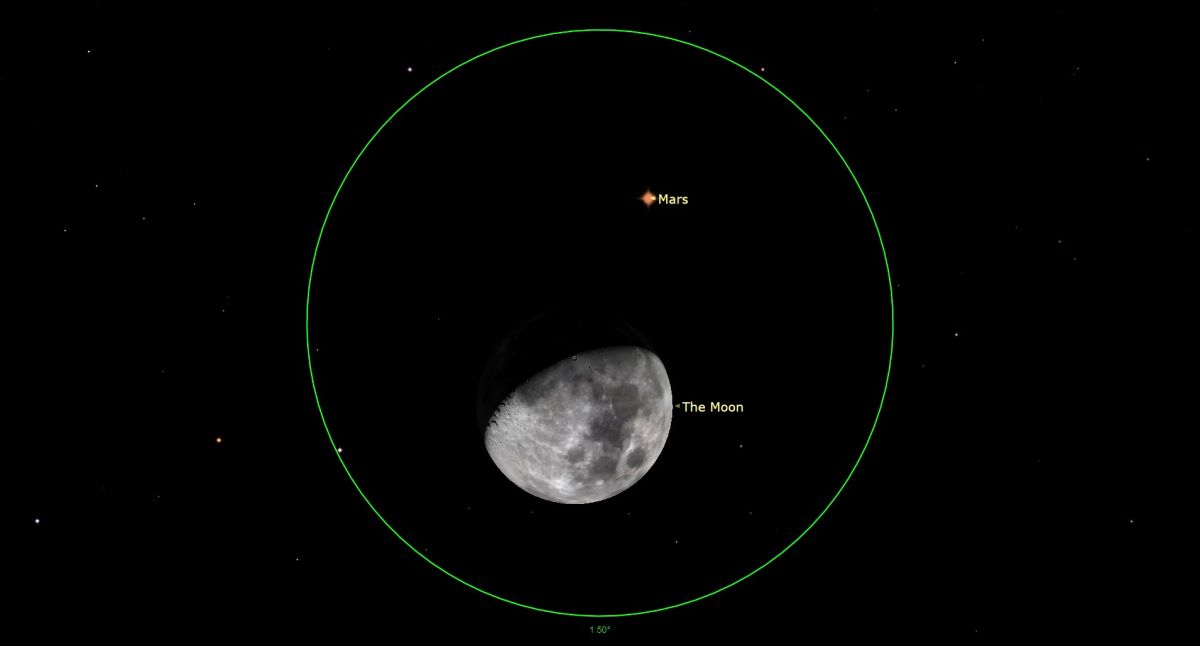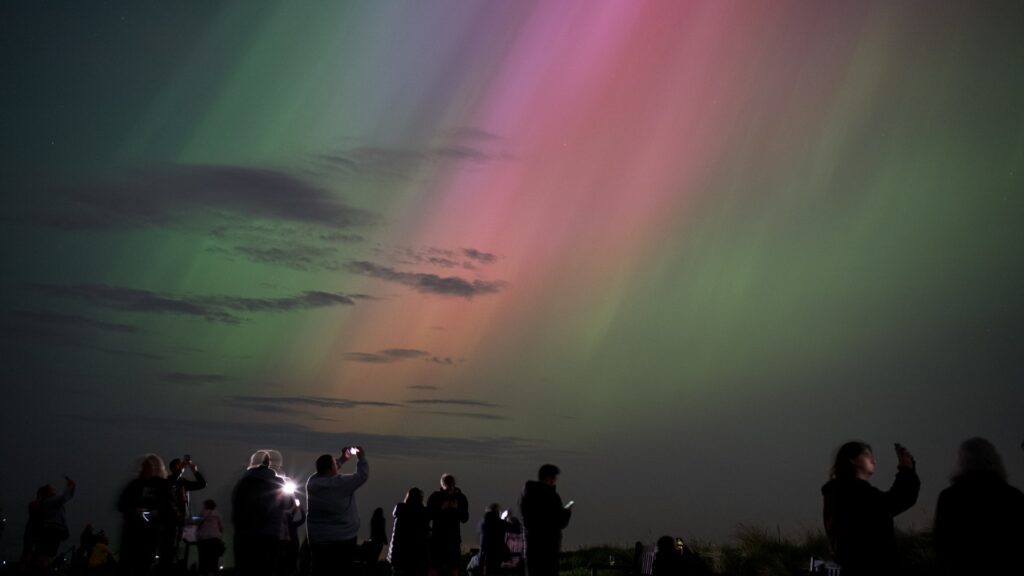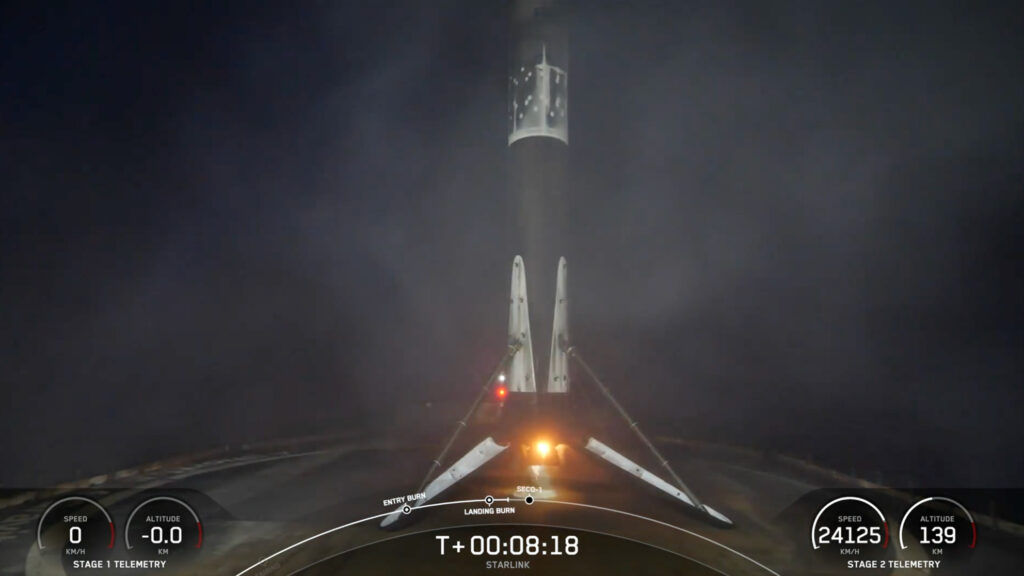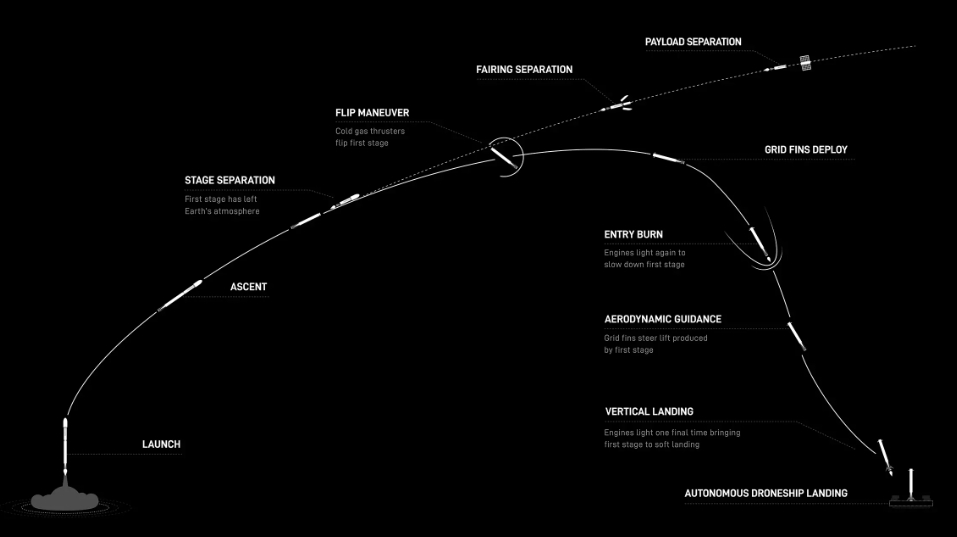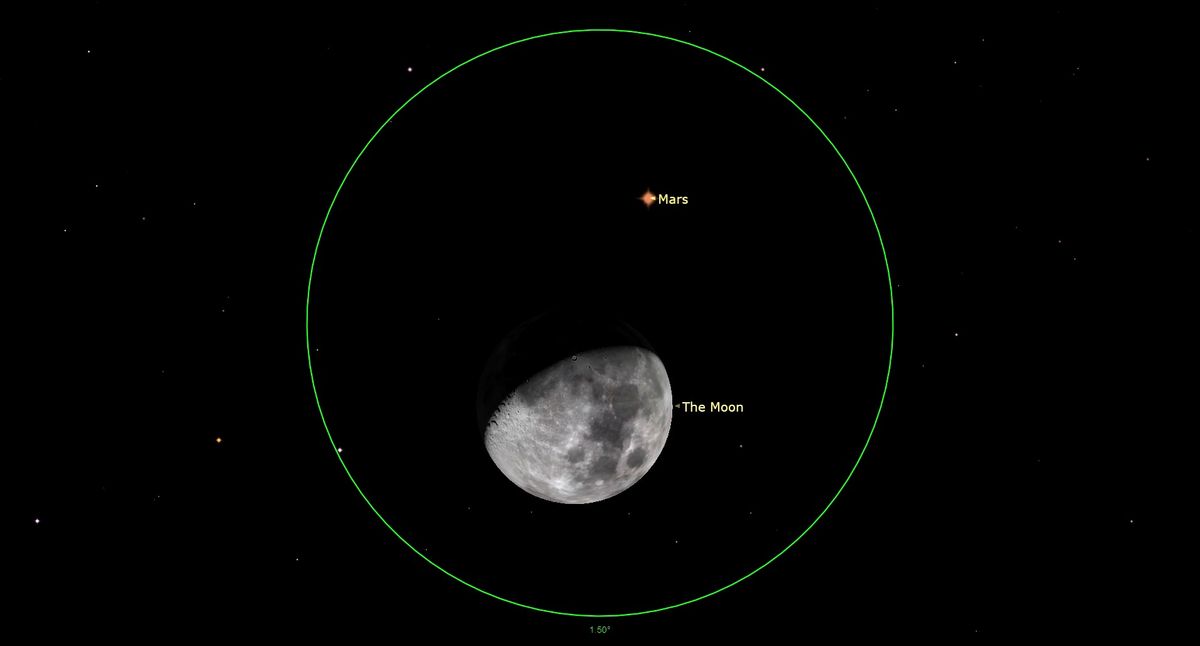
It’s time to take the telescope out.
On Monday night (Jan. 30), the moon will eclipse Mars in what’s known as an occultation — the moon will pass in front of Mars from the perspective of Earth.
Unfortunately only a small swath of the planet will be able to see the occultation, but that does include the southern United States, from southern California all the way to northern Florida, and as far north as Oklahoma, according to skywatching site In-the-sky.org. (opens in new tab) Other viewing areas include Mexico, the Caribbean, Central American, and northwestern South America. A full list of viewing times by location for both the lunar occultation of Mars and the appulse of the moon and the Red Planet can be found on Space.com courtesy of veteran skywatcher Joe Rao.
For those who can’t see the event in person, the Griffith Observatory in Los Angeles is hosting a free online livestream of the lunar occultation of Mars courtesy of the observatory’s website (opens in new tab) or its YouTube channel (opens in new tab). The livestream begins on Monday (Jan. 30) at 11:00 p.m. EST (0400 GMT on Jan. 31) and will last for two hours.
Related: Don’t miss the moon eclipse Mars next week on Monday (Jan. 30)
For those who live outside the zone of visibility of the lunar occultation, you’ll still be able to witness the conjunction of the moon and Mars, as the two celestial bodies will share the same right ascension (celestial equivalent of latitude) in an arrangement known as a conjunction. They’ll also be making a close approach, known as an appulse.
From New York City, the moon and Mars will be just one-tenth of a degree apart, according to In-the-sky.org (opens in new tab). The duo will be visible from 12:10 p.m. EST (1710 GMT) until 3:23 a.m. EST (0823 GMT), and they’ll be able to fit within the field of view of a telescope. You’ll also be able to see the pair with binoculars and the naked eye.
As a 10-day-old moon in its waxing gibbous phase, its surface will be 74 percent illuminated from the perspective of Earth. It will be quite bright with a magnitude of -12.3, while Mars will be significantly less bright at magnitude -0.3.
Both the moon and Mars will be less bright than they were during their last occultation, which occurred in December 2022 during a full moon.
Related: What is the moon phase today? Lunar phases 2023
If you need to gear up for tonight’s occultation (or conjunction or appulse) of the moon and Mars, we’ve prepared guides to the best telescopes and best binoculars to help you out. And for astrophotographers — budding or experienced — we’ve also rated the best cameras for astrophotography and the best lenses for astrophotography and put together a guide on how to photograph the moon.
Editor’s Note: If you get a great photo of the close approach or conjunction between Mars and the moon and would like to share it with Space.com’s readers, send your photo(s), comments, and your name and location to spacephotos@space.com.
Follow Stefanie Waldek on Twitter @StefanieWaldek (opens in new tab). Follow us @Spacedotcom (opens in new tab), or on Facebook (opens in new tab) and Instagram (opens in new tab).
